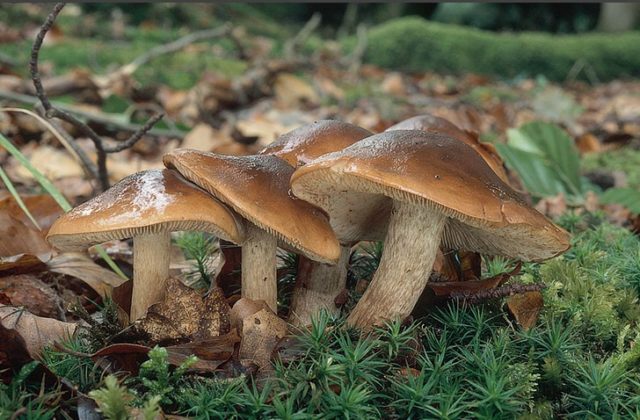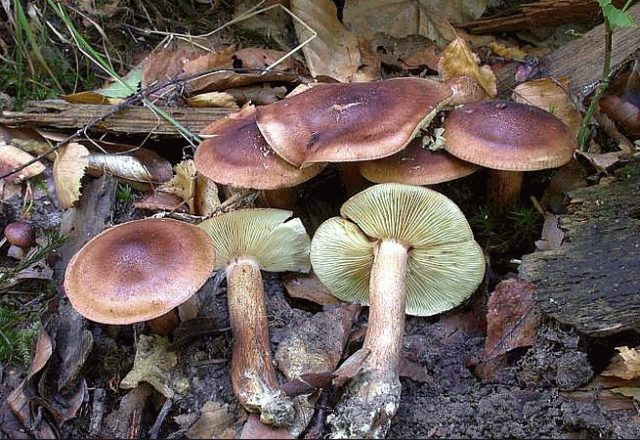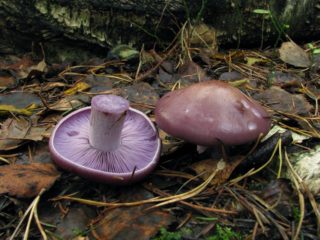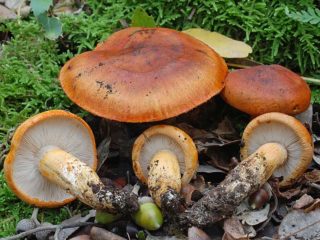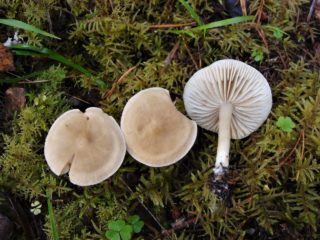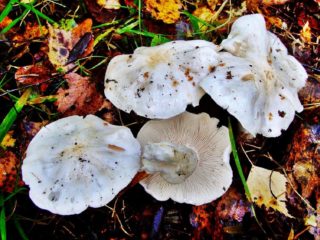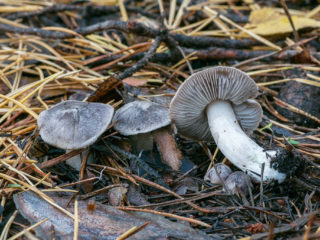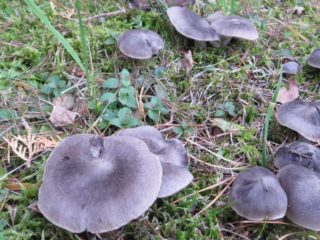Content
The scorched rower belongs to the genus Tricholoma, family Rowaceae. The name of the mushroom in Latin, Gyrophila ustalis, is translated in the same way as tanned or burned row, it is widely known in Europe as the “burnt knight.”
Where the scorched rows grow
The representative can often be found in deciduous forests. It is widespread in temperate climates and grows in Japan, North America, Europe and Asia. The fruiting season is in autumn. The mycelium forms ectotrophic mycorrhiza with beech, entwining the roots of the tree in a dense network. But the presence of beech is not a prerequisite for existence; sometimes the mycelium grows in mixed forests.
What do scorched rows look like?
The mushroom got its name due to the characteristic brown color of the fruiting body, reminiscent of a sun tan. The diameter of the cap is from 3 to 10 cm; in young specimens it is convex, cone-shaped, sometimes with the edge turned inward. As it grows, the cap becomes flat; it has a sticky surface with a chestnut tint.
The plates are frequent, with notches, attached to the stem. When young they have a cream or pale yellow color; as the fruiting body ages, they acquire a pale brown tint with red-brown spots. Mushroom spores are white, ellipsoid.
The leg is thin, cylindrical, thickness - from 1 to 2.5 cm, length - 3-9 cm. At the base it thickens a little, has a brown color, at the top the leg is whitish. The mushroom pulp has a cucumber or mealy aroma and is white in color; at the point of cutting it changes color to brown.
Is it possible to eat scorched rows?
In Japan, scorched grass accounts for 30% of all mushroom poisonings. Japanese scientists conducted laboratory studies and revealed a high content of toxins in these fruits. Ustalic acids and related compounds are also found in other poisonous representatives of the genus Tricholoma.
Studies of toxic properties were carried out on mice, which, after force-feeding, froze immobile, leaning to the side. Soon the rodents began to experience tremors and involuntary contractions of the abdominal muscles.
How to distinguish scorched rows
Scorched rowers are similar to some conditionally edible species from the genus Tricholoma. For example, the brown-yellow row or Tricholoma fiavobrunneum has a similar color. But she is larger in size.The height of the stem can reach 12-15 cm, most often it grows in deciduous forests, forming mycorrhiza with birch.
Another conditionally edible species that vaguely resembles the scorched row is Lashanka or Tricholoma albobrunneum, which often forms mycorrhiza with pine. These mushrooms have a similar shape and diameter of the cap, length and thickness of the stem. Even brown coloration and dark spots on a light hymenophore can be misleading. Of course, no one would think of picking poisonous mushrooms, but they often put them in a basket, thinking that they are edible white-brown rows.
The scorched row differs from the described conditionally edible species by its darker blades and ectomycorrhizal combination with beech. But young specimens have light-colored hymenophores, sometimes they are found in mixed forests where there are conifers, so if there is the slightest doubt, it is better to refuse to collect the mushroom harvest.
Symptoms of poisoning
Scorched rows cause gastrointestinal disorders. Spasms and severe pain in the abdominal region, tremors of the whole body begin. The first symptoms appear 1-6 hours after eating mushroom dishes. A mild illness soon develops into severe food poisoning.
Nausea, vomiting, diarrhea begins, the functioning of the cardiovascular system is disrupted and orientation in space becomes difficult. You cannot wait for all these symptoms to fully manifest; the victim must immediately be given first aid, which will promote recovery. Toxins are contained in large quantities in mushroom pulp; with quick help, the chances of a successful outcome increase.
First aid for poisoning
If you feel unwell and have severe abdominal pain after eating mushroom dishes, you should immediately call an ambulance.Before her arrival, the stomach is cleaned and an enema is administered. Drink a large amount of liquid and press on the root of the tongue, causing a gag reflex. You can drink any sorbent that is found in your home medicine cabinet.
Conclusion
Scorched row is an inedible toxic mushroom that can often be found in the forest in the fall. Inexperienced mushroom pickers sometimes confuse it with conditionally edible representatives of the kingdom of mushrooms from the genus Ryadovok.
